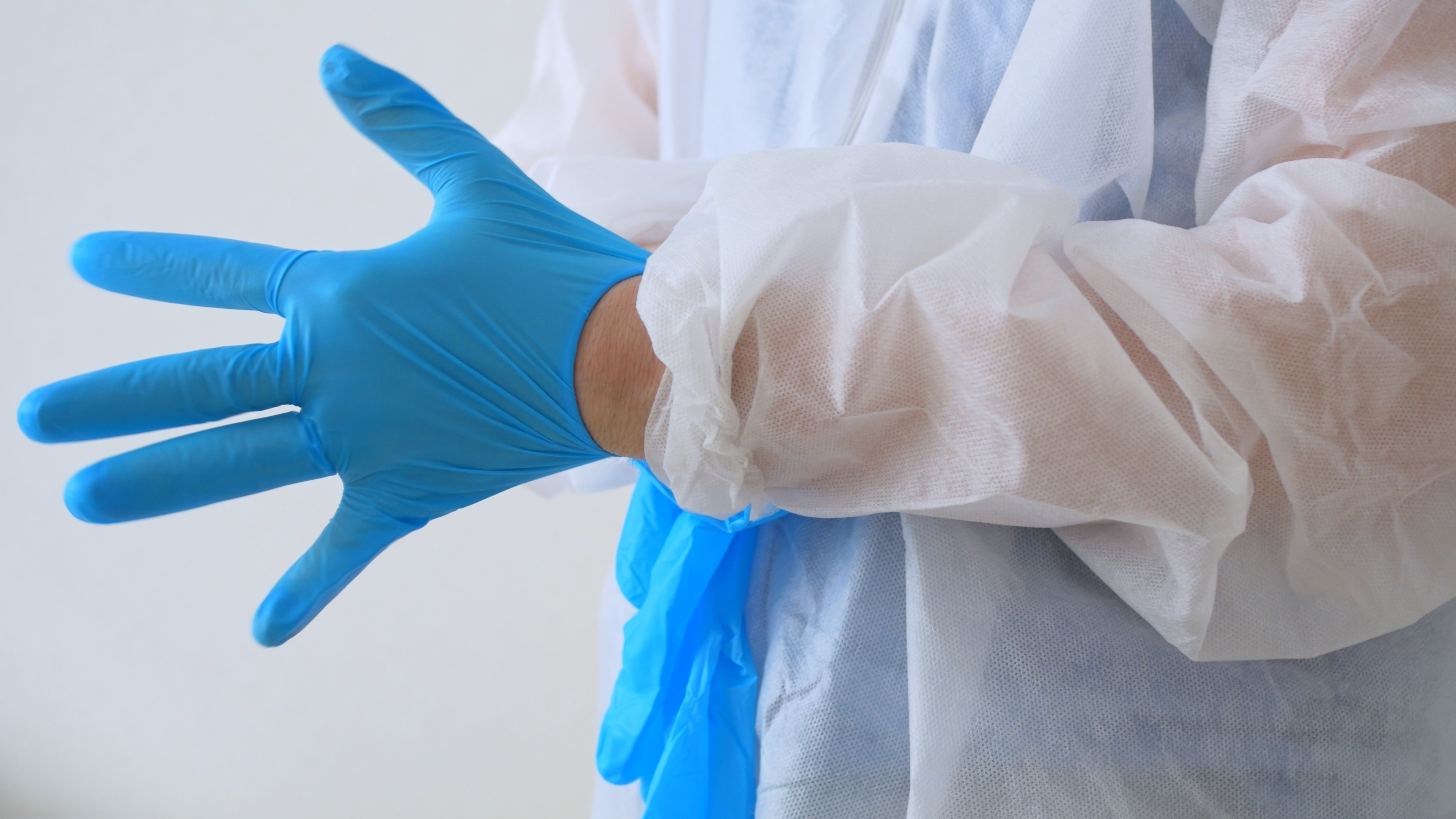Cleaning Scabies Outbreak Management
Cleaning in a scabies outbreak is slightly different from other outbreaks. Careful attention must be paid to different surface types that may harbour the scabies mite.
PPE Required
Gloves
Long sleeve disposable gown
Equipment
Detergents
Isolation room
Isolation bags
Yellow hazard bags
Vacuum cleaner
Use only cleaning items and equipment designated YELLOW for cleaning the isolation rooms
NB: The residential aged care facility will provide a safety data sheet on the detergents and disinfectants and how to use them.
Cleaning Different Surfaces
Large Fabric Items
Vacuum all carpets, r ugs, fabric-covered chairs, and large fabric items that are unable to be laundered
ugs, fabric-covered chairs, and large fabric items that are unable to be laundered
Seams of large fabric items are to be vacuumed with a high suction small diameter nozzle, although recommended to use insecticide, as a vacuum cleaner may not pick up all the mites
Place large fabric items in a plastic bag for 48 hours, or leave them isolated in a closed room for 48 hours, or spray them with an insecticide
Small Fabric Items
Washable small fabric items should be placed in a yellow hazard bag and sent to the laundry
Unwashable small fabric items should be placed in a plastic bag for 48 hours, or isolated in a closed room for 48 hours, or sprayed with an insecticide
Non-Fabric Surfaces
T horoughly wipe over non-fabric-covered surfaces such as vinyl chairs and plastic mattress covers with a standard cleaning solution
horoughly wipe over non-fabric-covered surfaces such as vinyl chairs and plastic mattress covers with a standard cleaning solution
Toilet seats and commode chair seats, wiped after each use
Smooth floors to be mopped using a standard cleaning solution
The Vacuum Cleaner
In a well-ventilated area, spray the vacuum cleaner lightly with insecticide after use to destroy mites that may have accumulated during cleaning on the surface of the vacuum during the cleaning. Place the vacuum bag in a tied yellow hazardous bag, then throw the bag away immediately after use in a clinical waste bag.
Use of Insecticides
Low-toxicity insecticides such as fly spray can kill mites
Use insecticides according to the directions on the label
Only a small amount of spray is required
Pregnant women should avoid exposure to insecticides
When using insecticides, remove residents from the room, and the room should be well-ventilated before being reoccupied
Extensive insecticide treatments are usually unnecessary, however, if comprehensive treatment is required, it is recommended that a licensed pest control operator be used
Terminal Cleaning Steps
Terminal clean rooms used by residents, post isolation, transfer, post-death, or discharge, to remove the infecting microbes.
1) Wear PPE
2) Remove curtains and bed screens and take them for laundering; curtain hooks must be washed thoroughly with detergent and warm water, then dried thoroughly
3) Clean horizontal surfaces that may collect dust, such as wardrobe tops, shelves, sills, and light fittings
4) Clean walls
5) Clean bathroom fittings
6) Clean windows and mirrors using window cleaner
7) Wipe blind and allow to dry thoroughly before rolling up
8) Tie the yellow clinical waste bag securely
9) Place all used clothes in the yellow clinical waste bag
10) Colour-coded (yellow) mop head must be placed in the yellow clinical waste bag, labelled, and tied securely for collection and laundering
11) Clean, dry, and store the yellow bucket upside down; wipe the mop handle with neutral detergent diluted or according to the manufacturer's instructions
12) Remove gloves after removing other protective apparel and place them into a clinical waste bag before leaving the room to reduce opportunities for cross-contamination
13) Wash hands thoroughly after removing protective clothing
14) After completing the terminal clean, don fresh PPE and re-hang clean curtains
15) Remove gloves and other PPE and perform hand hygiene